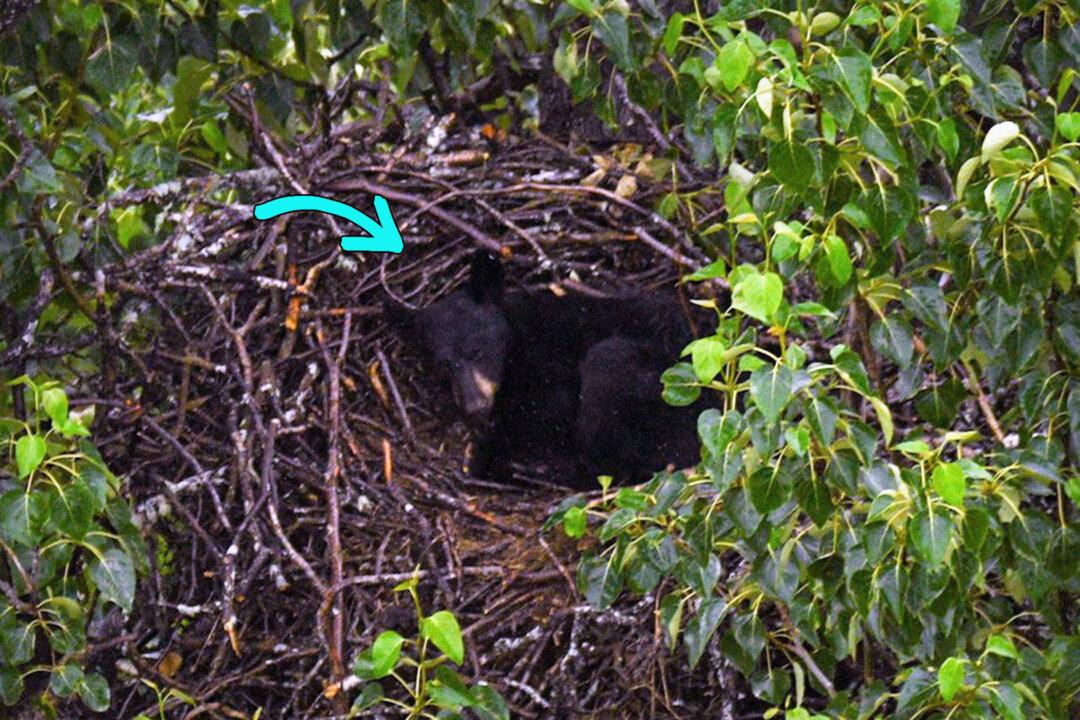A young black bear was found napping in an eagle’s nest on a military base in Alaska by researchers who were conducting a survey to determine if the eagles had succeeded in producing eaglets.
“I’ve never seen a bear in a nest like this over many years of nest surveys and wildlife work in Alaska,” Steve Lewis, a wildlife biologist with the U.S. Fish & Wildlife Service told The Epoch Times.






